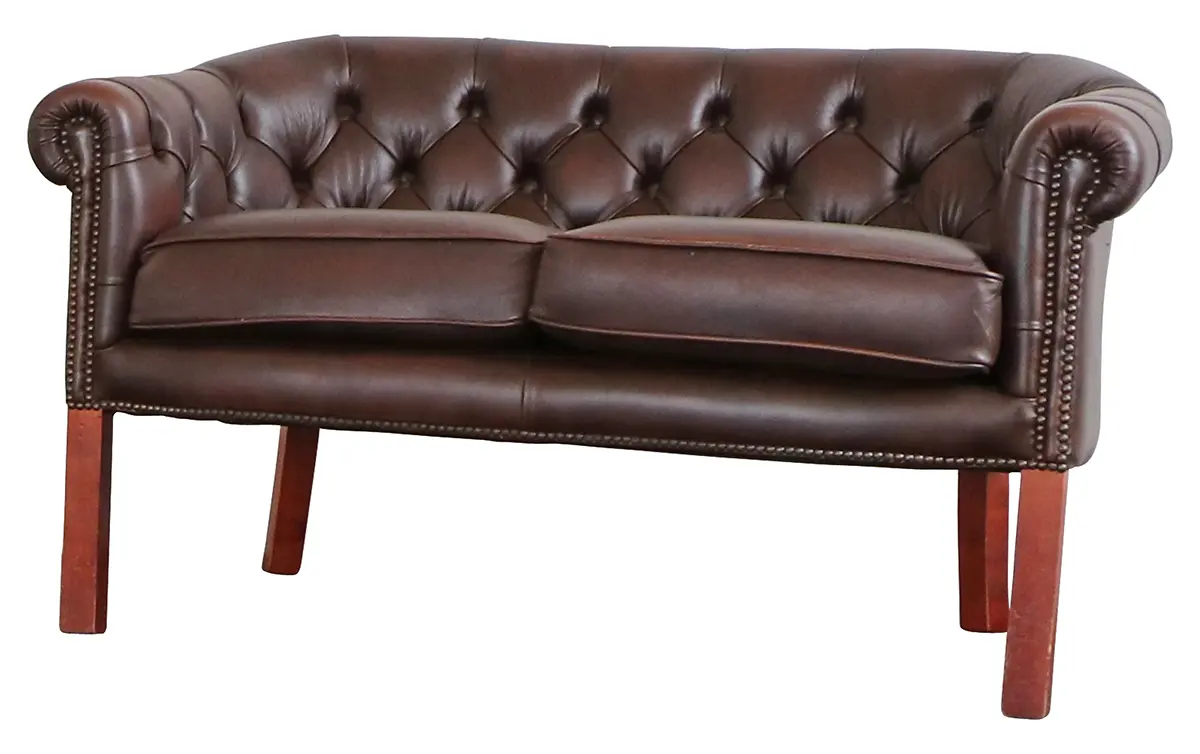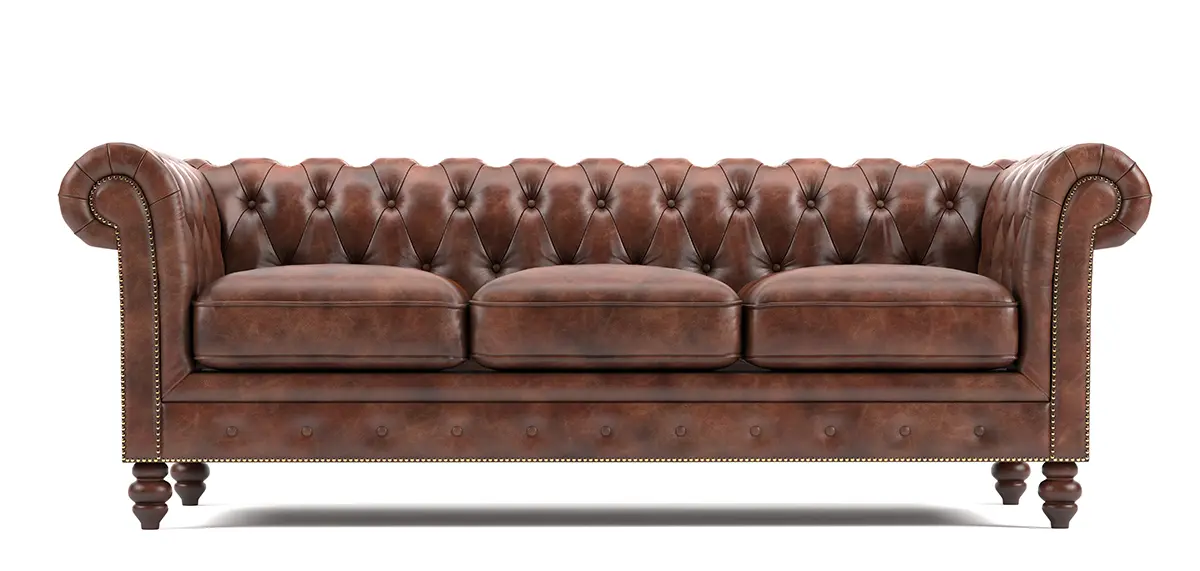Deep Buttoned Seating Upholstery
Deep buttoned seating upholstery, commonly associated with the luxurious Chesterfield sofa and other traditional furniture styles, is a hallmark of craftsmanship that evokes elegance, sophistication, and historical opulence. The process, often referred to as “deep tufting” or “button tufting,” involves securing fabric or leather to the underlying frame with buttons, creating a quilted pattern of folds and pleats. This technique is not only decorative but also adds a layer of durability to furniture pieces, allowing them to maintain their structure and appearance over time.
The enduring appeal of deep buttoned upholstery has spanned centuries, from the parlours of the Victorian era to the modern living rooms of today. This design feature adds texture, depth, and a plush aesthetic to seating options, making it a favourite among designers and furniture makers. The beauty of this technique lies in its ability to marry form with function, enhancing both the visual and tactile qualities of the furniture.
Here we will explore the history, craftsmanship, materials, and various applications of deep buttoned seating upholstery, as well as its continued relevance in contemporary design.
The History of Deep Buttoned Upholstery
Deep buttoned upholstery has its roots in 17th and 18th-century Europe, where furniture making became an art form that reflected the social status and wealth of its owners. The technique was initially reserved for the aristocracy and the upper classes, as the labor-intensive process and high-quality materials required made it an expensive luxury. French and English furniture makers played significant roles in popularising the technique, and it became a defining feature of Victorian-era interiors.
One of the most iconic representations of deep buttoned upholstery is the Chesterfield sofa, a quintessential British design introduced in the late 18th century. Legend has it that Philip Stanhope, the 4th Earl of Chesterfield, commissioned a sofa with a deep buttoned back and armrests equal in height to provide upright sitting posture without compromising comfort. This set the standard for buttoned upholstery, and the Chesterfield design became synonymous with luxury, class, and timeless appeal.
As upholstery techniques advanced during the Victorian period, the deep buttoning technique evolved. Designers embraced its decorative potential, creating intricate diamond and grid patterns with the buttons and pleats. By the 19th century, deep buttoned seating was a staple in gentleman’s clubs, aristocratic homes, and even royal palaces, where it was often paired with rich leather, velvet, or brocade.
The Craftsmanship of Deep Buttoned Upholstery
At the heart of deep buttoned upholstery lies meticulous craftsmanship. Unlike more straightforward upholstery methods, which may simply involve stretching fabric over a cushion and tacking it into place, deep buttoning requires a skilled artisan to create the tufting pattern and secure it with buttons that are evenly spaced and pulled taut.
The process begins with the selection of high-quality materials, including durable fabrics or leathers, soft but supportive padding (often made of foam or horsehair in traditional designs), and strong thread. The framework of the furniture—typically made of hardwood—must also be sturdy enough to withstand the tension created by the deep tufting. Once the basic structure is prepared, the upholsterer carefully marks out the locations where the buttons will be inserted.
Afterward, the craftsman stitches buttons through the layers of fabric and padding into the frame, pulling the fabric tight with each button and creating the signature puckered, tufted effect. The fabric between the buttons forms raised pleats or folds, adding texture and visual interest to the piece. This technique requires precision to ensure that the pattern is consistent, with each button contributing to the overall aesthetic balance of the upholstery.
The deep tufting not only serves a decorative purpose but also provides additional durability by helping to secure the fabric and padding to the frame, preventing them from shifting or bunching over time. This combination of beauty and durability is one reason why deep buttoned upholstery remains so popular.

Materials Used in Deep Buttoned Upholstery
The selection of materials is crucial to achieving the desired look and feel of deep buttoned upholstery. Different materials can dramatically change the character and style of a piece, from formal and traditional to contemporary and relaxed.
Fabrics
- Leather: The most traditional material for deep buttoned seating, leather has long been associated with luxury, especially in the Chesterfield sofa. Leather is durable, develops a rich patina over time, and offers a distinctive blend of comfort and style. Its smooth texture complements the tufting, allowing for neat pleats and folds. A classic brown or black leather Chesterfield is an enduring symbol of gentlemanly refinement.
- Velvet: For those seeking a more opulent and plush finish, velvet is a popular choice for deep buttoned upholstery. Its soft, tactile surface enhances the sumptuous look of tufted seating, making it a preferred material for more formal or lavish interiors. Velvet comes in a wide range of colours, from jewel tones like emerald green and royal blue to soft, pastel hues.
- Linen: For a more casual or contemporary interpretation of deep buttoned upholstery, linen offers a lighter, breezier option. Though it lacks the sheen and depth of leather or velvet, linen has a natural texture that adds warmth and comfort to seating. It is also breathable, making it a practical choice for hot climates or modern homes.
- Brocade and Damask: These richly patterned fabrics were historically popular in deep buttoned furniture, especially in more formal settings. Their elaborate designs added an extra layer of luxury to tufted seating, often featuring intricate floral or geometric patterns. Today, brocade and damask are less common but remain an option for those seeking a vintage or classical aesthetic.
Padding and Fillings
- Horsehair: In traditional upholstery, horsehair was used as a filling material due to its resilience and ability to hold its shape over time. Though less common today, some high-end furniture makers still use horsehair for an authentic, old-world feel.
- Foam: Modern upholstery often uses foam padding for its comfort, affordability, and availability. High-density foam provides support while retaining the softness needed for a comfortable seating experience.
Buttons
- Fabric-covered buttons: For a cohesive look, upholsterers often cover buttons with the same fabric or leather used in the upholstery. These buttons blend seamlessly into the tufted design, emphasising the texture without distracting from it.
- Contrasting buttons: In some cases, upholsterers use buttons in a contrasting material or colour to add visual interest. For example, metal or wooden buttons might be used on leather seating for a rustic or industrial look.
Applications of Deep Buttoned Upholstery in Furniture
Deep buttoned upholstery is versatile and can be applied to a wide range of seating options, from sofas and armchairs to ottomans and headboards. While the Chesterfield sofa remains the most iconic example of deep buttoned upholstery, contemporary furniture designers have expanded the technique’s use to suit modern tastes and interiors.
- Chesterfield Sofas: The Chesterfield sofa is the archetype of deep buttoned upholstery. Its deep, rolled arms and low back, combined with a uniform tufted pattern, exude a sense of classic elegance. Traditionally, Chesterfields were upholstered in leather, but today, they are available in a variety of fabrics and colours to suit different design preferences.
- Armchairs: Deep buttoning is also a popular choice for armchairs, particularly in formal living rooms, libraries, or reading nooks. The tufting adds visual weight and structure to the chair, making it an ideal focal point in a room.
- Ottomans and Benches: Deep buttoned upholstery is often used in ottomans and benches, which can serve as both seating and accent pieces. The tufting provides a tailored look, elevating these functional pieces into stylish elements of décor.
- Headboards: In bedrooms, deep buttoned headboards add a touch of luxury and comfort. The tufting gives the headboard a plush, padded look, creating an inviting focal point above the bed.
The Contemporary Appeal of Deep Buttoned Upholstery
Despite its historical roots, deep buttoned upholstery remains a popular choice in modern interiors. Its classic design has evolved to suit contemporary tastes, with many designers experimenting with new materials, colours, and patterns. Modern interpretations of deep tufting often incorporate bold colours, minimalistic frames, or unconventional fabrics, offering a fresh take on this traditional technique.
In minimalist spaces, a deep buttoned sofa or armchair can serve as a statement piece, adding texture and visual interest without overwhelming the simplicity of the room. Conversely, in more eclectic or maximalist interiors, deep buttoning can enhance the richness and layers of the décor, contributing to a feeling of abundance and comfort.
Conclusion
Deep buttoned seating upholstery is a timeless technique that combines aesthetics, craftsmanship, and durability. Its rich history, rooted in European aristocratic traditions, has evolved to meet the needs of contemporary design without losing its sense of luxury and elegance. Whether in a traditional Chesterfield sofa, a plush velvet armchair, or a modern ottoman, deep buttoning adds texture, depth, and a sense of opulence to any piece of furniture.
Its ability to adapt to different materials, styles, and settings ensures that deep buttoned upholstery will remain a cherished and enduring element of furniture design for generations to come. Whether you’re drawn to the classic charm of leather or the modern appeal of velvet, deep buttoned seating offers a timeless sophistication that elevates any space.
For more information on Deep Buttoned Seating Upholstery contact Hill Upholstery.
Share this article:
Tweet


